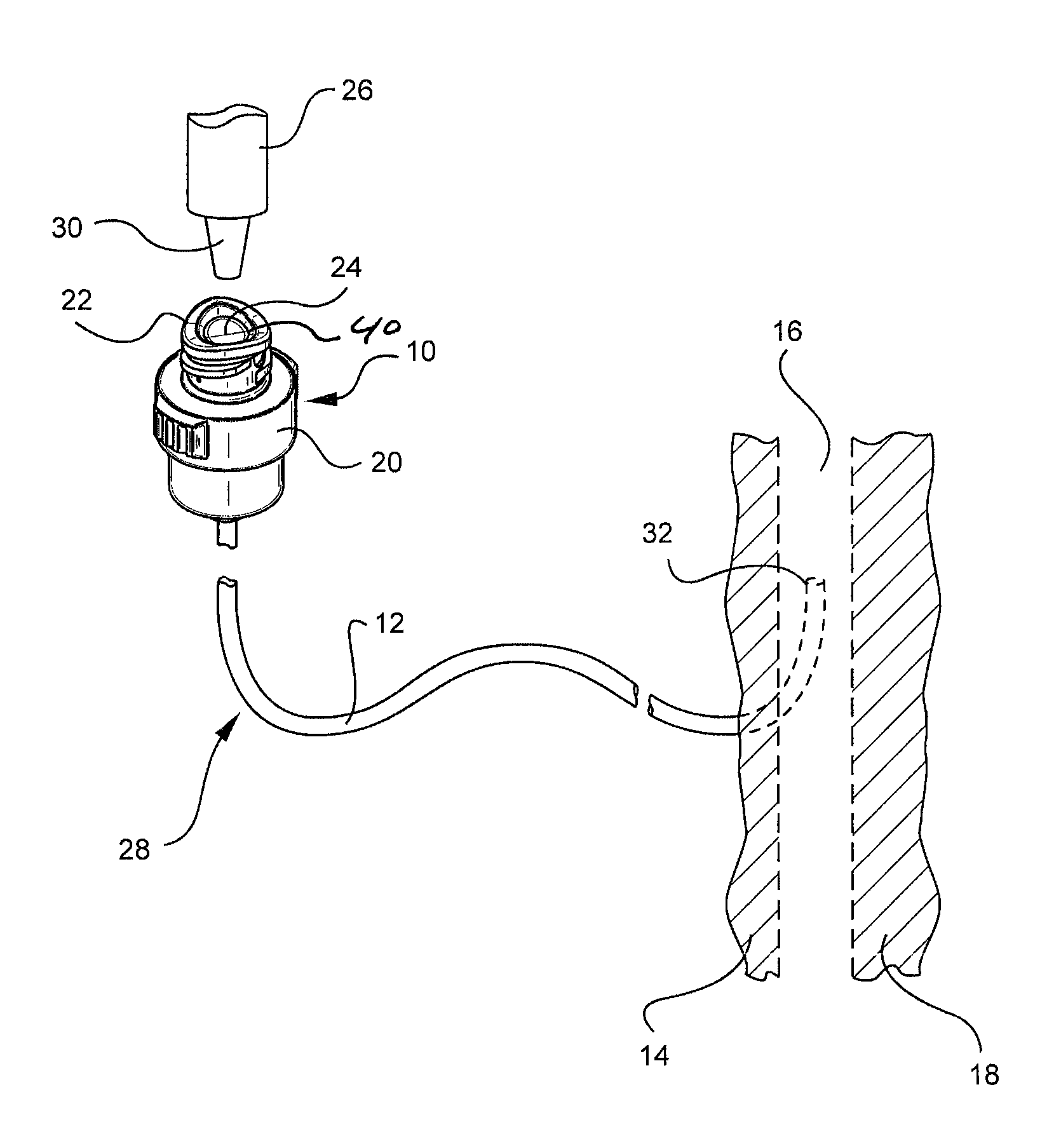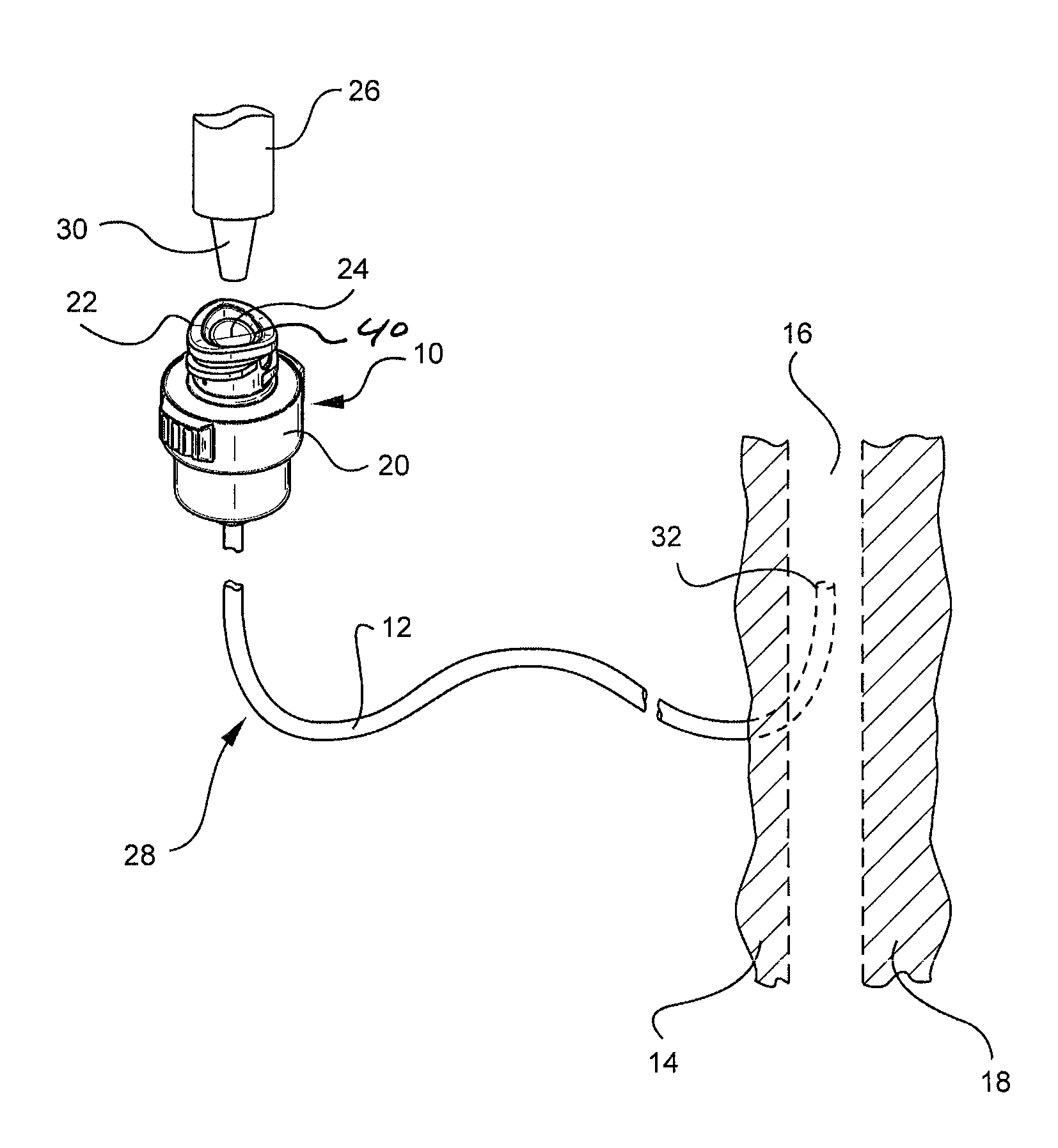Antimicrobial lubricant compositions
a technology of lubricant composition and antimicrobial composition, which is applied in the direction of pretreatment surfaces, medical preparations, and amine active ingredients, etc., can solve the problems of disseminating bsi (blood stream infection), and affecting the effect of lubricating performan
- Summary
- Abstract
- Description
- Claims
- Application Information
AI Technical Summary
Benefits of technology
Problems solved by technology
Method used
Image
Examples
example 1
[0036]Table 1 illustrates the contact kill and zone of inhibition of different lubricant formulations. As shown in Table 1, the silver element (10) and silver compound (3, 4 and 5) all have relatively low contact kill until 8 hours later. Cetyl pyridium chloride, cetrimide, alexidine, chlorhexidine diacetate and benzalkonium chloride all have significant contact kill within 1 minute.
[0037]
TABLE 1The Contact Kill (% kill) and Zone of Inhibition (mm) of DifferentLubricant Formulations1.Contact Kill (% Kill)4SampleS. epidermidis3P. aeruginosaC. albicansZone of Inhibition (mm)#21 min.1 hr.8 hr.1 min.1 hr.8 hr.1 min1 hr.8 hr.S. epiderP. aerugC. albicans1100NDND98.2NDND64.4100ND20.09.020.02100NDND100NDND100NDND11.0+14.530.026.01000.049.71000.038.394.67.06.08.040.08.01009.736.11000.022.275.58.08.810.850.020.010096.091.21000.074.190.010.59.010.86100NDND100NDND100NDND30.57.021.87100NDND100NDND100NDND14.50.013.080.0100ND100NDND100NDND27.00.021.390.0100ND21.2100ND64.4100ND20.50.08.3100.00.078....
example 2
[0038]Based on initial test data, one preferred embodiment of the lubricant invention may be formulated as follows:[0039]1. Lubricant(s)—Med-460, 350 cps from Nusil Silicone Technology (Carpinteria, Calif.)[0040]2. Rheology modifier(s)—Fumed silica from Cabot Corporation (Tuscola, Ill.)[0041]3. Antimicrobial agent(s)—Cetyl pyridium chloride, cetrimide, alexidine, chlorhexidine diacetate or benzalkonium chloride.
example 3
[0042]Table 2 illustrates the contact kill and zone of inhibition of different lubricant compositions. Samples 1-5 included the lubricant Med.-360 which is comprised of polydimethyl siloxane with a viscosity of 350 cps. The antimicrobial agent was varied as follows:
[0043]1. chlorhexidine diacetate
[0044]2. cetrimide
[0045]3. cetyl pyridium chloride
[0046]4. benzalkonium chloride
[0047]5. o-phthalaldehyde
[0048]
TABLE 2The Contact Kill (% kill) and Zone of Inhibition (mm) of DifferentLubricant Formulations1.Contact Kill (% Kill)4SampleS. epidermidis3P. aeruginosaC. albicansZone of Inhibition (mm)#21 min.1 hr.8 hr.1 min.1 hr.8 hr.1 min1 hr.8 hr.S. epiderP. aerugC. albicans193.6NDND97.6NDND50.0100ND19.06.513.02100NDND100NDND100NDND31.520.521.03100NDND100NDND100NDND19.517.014.04100NDND100NDND100NDND28.016.523.0598.2NDND63.4100ND100NDND30.017.014.0
PUM
| Property | Measurement | Unit |
|---|---|---|
| viscosity | aaaaa | aaaaa |
| rheological | aaaaa | aaaaa |
| weight | aaaaa | aaaaa |
Abstract
Description
Claims
Application Information
 Login to View More
Login to View More - R&D
- Intellectual Property
- Life Sciences
- Materials
- Tech Scout
- Unparalleled Data Quality
- Higher Quality Content
- 60% Fewer Hallucinations
Browse by: Latest US Patents, China's latest patents, Technical Efficacy Thesaurus, Application Domain, Technology Topic, Popular Technical Reports.
© 2025 PatSnap. All rights reserved.Legal|Privacy policy|Modern Slavery Act Transparency Statement|Sitemap|About US| Contact US: help@patsnap.com


